Connecting to Your Roots Through Pottery Arts
Have you ever felt a deep connection to something that transcends time? Pottery arts can evoke such feelings, acting as a bridge between the past and the present. When you mold clay with your hands, you’re not just creating a vessel; you’re tapping into a rich tapestry of **cultural heritage** and **ancestral traditions**. Each piece of pottery tells a story, echoing the voices of those who came before us. This article delves into the profound relationship between pottery and **cultural identity**, illustrating how the act of creating pottery can serve as a powerful medium for connecting individuals to their roots.
Imagine walking into a cozy studio filled with the earthy aroma of wet clay, the sound of wheels spinning, and the sight of vibrant glazes waiting to be applied. Pottery is not merely an art form; it’s a **celebration of culture**. For centuries, various communities have used pottery to express their beliefs, values, and history. From the intricate designs of Native American pottery to the elegant forms of Japanese ceramics, each style reflects a unique cultural narrative. When you engage in pottery, you’re not just learning a craft; you’re participating in a **tradition** that has been passed down through generations.
But what makes pottery so special in connecting us to our roots? It’s the **hands-on experience** that allows individuals to create something tangible that resonates with their heritage. The tactile nature of clay encourages a deep, personal relationship with the material. Whether you’re rolling coils of clay or throwing a pot on a wheel, every movement is infused with intention and meaning. This connection to the material can evoke a sense of nostalgia, reminding us of our ancestors who similarly shaped the earth with their hands.
Furthermore, pottery arts often serve as a communal activity, fostering collaboration and shared experiences. Workshops and classes provide opportunities for individuals to come together, learn from one another, and share their stories. In these settings, the act of creating becomes a communal ritual, where participants bond over their shared passion for pottery, encouraging a deeper understanding of their cultural backgrounds.
Ultimately, pottery is more than just an art form; it’s a **journey into the past**. As we explore the various techniques and styles in pottery, we uncover the rich history that shapes our identities today. By engaging with this ancient craft, we can revive ancestral techniques and ensure that the stories of our ancestors continue to resonate in our lives. So, whether you’re a seasoned potter or just starting, remember that every piece you create is a step towards reconnecting with your roots.

The Historical Significance of Pottery
Pottery has been an integral part of human civilization for thousands of years, serving not just practical purposes but also reflecting the cultural identities of various societies. From the earliest clay figurines to the intricate vessels used in rituals, pottery tells a story of human creativity and resourcefulness. Imagine a world without pottery—no bowls to hold food, no jars to store water, and no artistic expressions to connect us to our ancestors. It’s hard to picture, right?
The origins of pottery date back to around 29,000 BC, with some of the oldest examples found in sites like Dolní Věstonice in the Czech Republic. These early pieces weren’t just functional; they were often decorated with intricate designs, indicating that even then, pottery was a form of personal and cultural expression. As civilizations evolved, so did pottery techniques, styles, and purposes. Ancient Egyptians, for instance, created beautifully painted pottery that often depicted scenes from daily life and mythology, while the Greeks are renowned for their black and red figure pottery, which detailed their rich storytelling traditions.
Throughout history, pottery has served as a means of trade, a medium for artistic expression, and a reflection of societal values. Different regions developed their unique styles and techniques, influenced by the available materials and cultural practices. For example, in Japan, the art of Raku pottery emerged as a spiritual practice, emphasizing the beauty of imperfection, while in Mexico, Talavera pottery showcases vibrant colors and intricate designs that celebrate the country's heritage.
Moreover, pottery has played a crucial role in archaeological studies, providing insights into the daily lives of ancient peoples. The shapes, sizes, and decorations of pottery shards help historians piece together information about diet, trade routes, and social structures of past civilizations. For instance, the discovery of a pottery shard with a unique design could indicate the presence of a particular culture or trade relationship, effectively acting as a time capsule of human history.
In summary, pottery is not merely an art form or a functional item; it is a historical artifact that connects us to our roots. It embodies the creativity, resourcefulness, and cultural expressions of humanity throughout the ages. As we explore the world of pottery, we uncover not just the beauty of the pieces themselves but also the rich tapestry of stories, traditions, and identities that they represent.
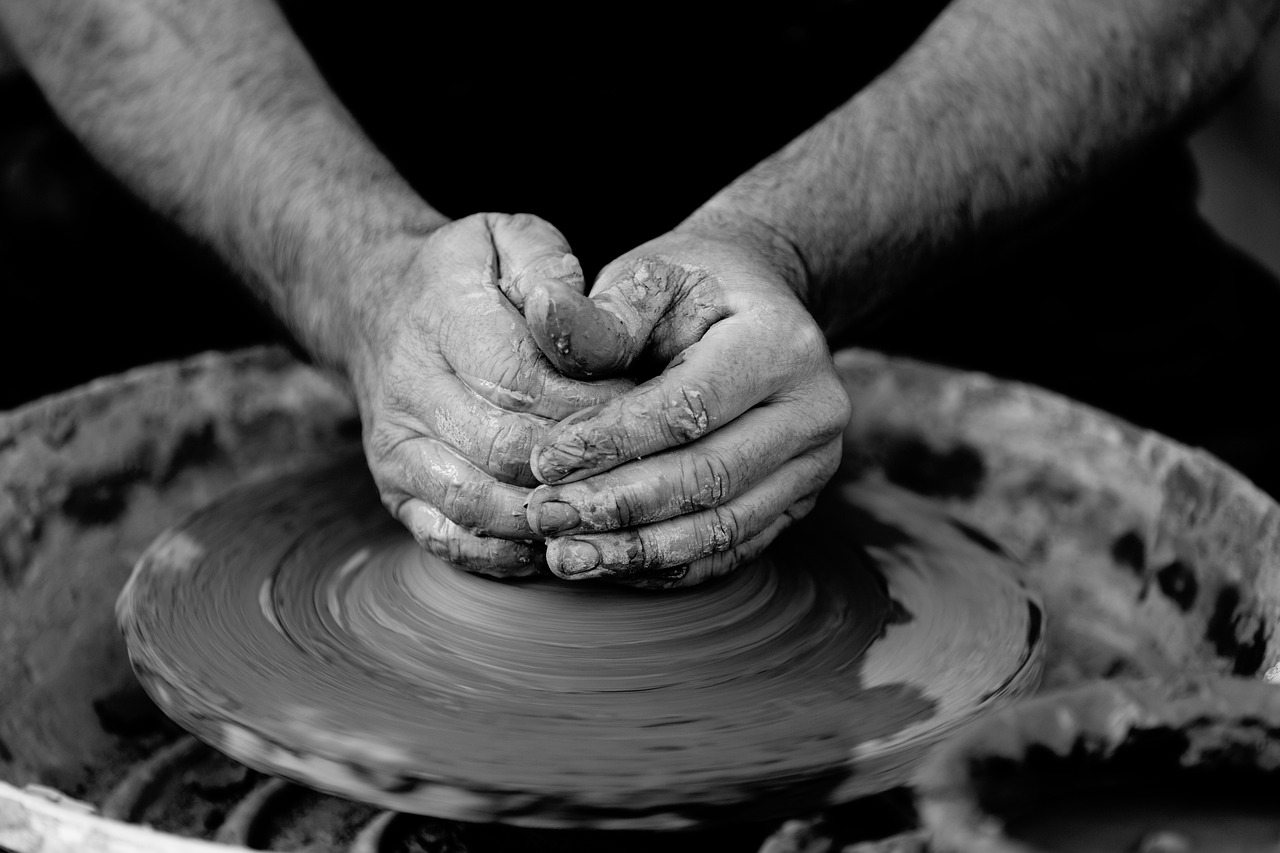
Techniques and Styles in Pottery
Pottery is not just about molding clay; it's a vibrant language of culture, tradition, and artistry. The techniques and styles in pottery showcase a rich tapestry of human expression that spans centuries and continents. From the ancient methods of hand-building to the precision of wheel-throwing, each technique tells a story of its own. It's fascinating to think that every potter, with their unique touch and creative vision, contributes to this ongoing narrative. So, what are the key techniques that have shaped the world of pottery? Let's dive into the world of clay and discover the magic behind these timeless practices.
One of the most captivating aspects of pottery is the variety of techniques that potters employ to bring their visions to life. Each method not only reflects the individual potter's skill but also embodies the cultural heritage of the region from which it originates. For instance, traditional hand-building techniques like coiling and pinching allow for a personal touch that resonates deeply with both the creator and the observer. These methods often evoke a sense of intimacy, as they require a direct connection between the artist's hands and the clay.
On the other hand, wheel-throwing techniques provide a contrasting experience. The potter's wheel, spinning with precision, allows artisans to create symmetrical forms that can be both functional and decorative. This technique requires a different set of skills, as it demands not just creativity but also a high level of control and understanding of the material. The beauty of wheel-thrown pottery lies in its ability to combine art and utility seamlessly.
To better understand these techniques, let's break them down further:
| Technique | Description | Characteristics |
|---|---|---|
| Coiling | Shaping clay into long ropes and stacking them to form vessels. | Unique, organic shapes; often reflects personal style. |
| Pinching | Using fingers to shape and mold the clay into forms. | Intimate, tactile; evokes a sense of warmth and connection. |
| Wheel-Throwing | Using a potter's wheel to create symmetrical shapes. | Refined, polished; highlights precision and skill. |
As we can see from the table, each technique offers a unique approach to pottery creation. The coiling technique, for instance, is a wonderful way for potters to express their individuality. By stacking and blending coils, they can create pieces that are not only functional but also tell a story of their heritage and personal journey. Similarly, the pinching technique fosters a sense of connection, allowing potters to leave a mark of their identity on each piece.
On the flip side, wheel-throwing represents a more technical aspect of pottery that emphasizes symmetry and refinement. This method is often favored for creating tableware and decorative items that need to meet specific aesthetic standards. The beauty of wheel-thrown pottery is in its elegance and the skill required to master it. Potters often spend years honing their abilities to achieve that perfect balance between form and function.
In conclusion, the techniques and styles in pottery are as diverse as the cultures they represent. Each method offers a unique lens through which we can view the world of pottery, revealing the intricate relationship between the artist, the medium, and their cultural heritage. Whether it's through the tactile intimacy of hand-building or the precise elegance of wheel-throwing, pottery continues to be a powerful medium for self-expression and cultural connection.
- What is the most common pottery technique? The most common techniques include hand-building methods like coiling and pinching, as well as wheel-throwing.
- How does pottery reflect cultural heritage? Pottery incorporates symbols, styles, and techniques that are unique to specific cultures, preserving traditions and stories.
- Can anyone learn pottery? Absolutely! Pottery is an accessible art form, and many workshops and classes are available for beginners.
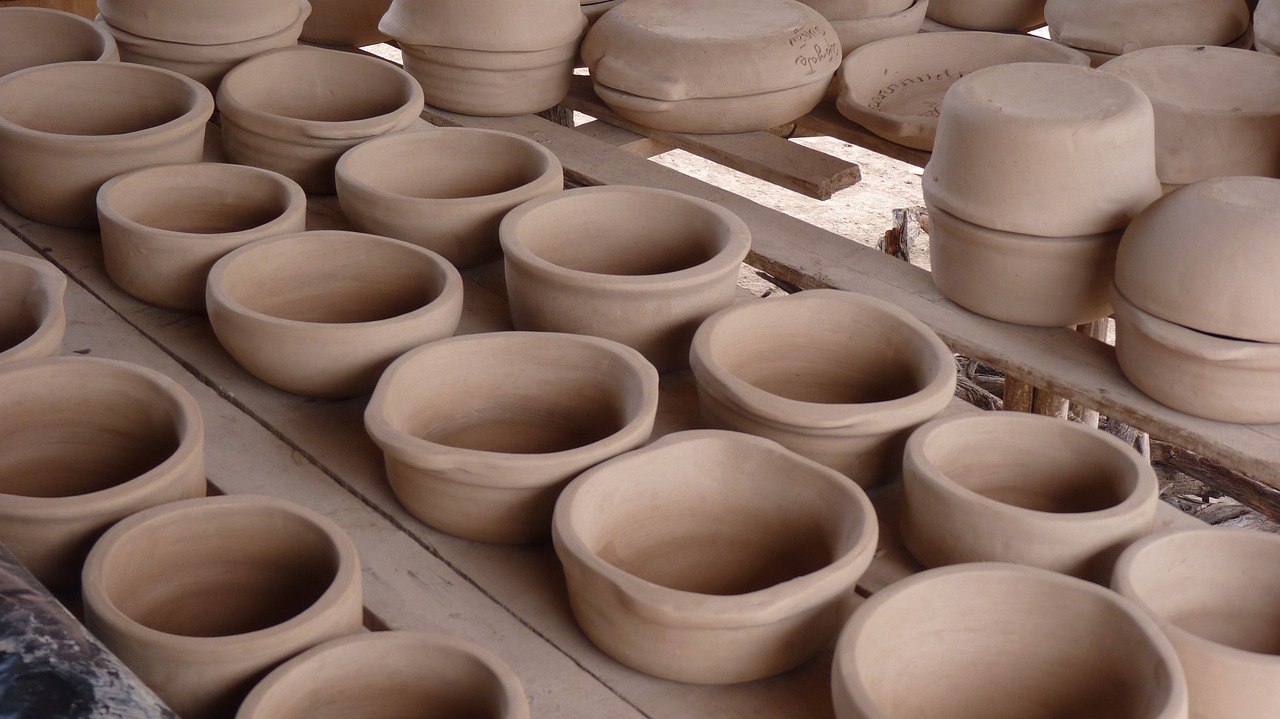
Traditional Hand-Building Methods
When we delve into the world of pottery, we uncover a treasure trove of that have stood the test of time. These techniques, such as coiling and pinching, not only allow potters to create stunning pieces but also forge a deep, tactile connection between the artist and the clay. Imagine running your fingers over the cool, malleable surface of wet clay, feeling its potential as you mold it into something uniquely your own. This is the magic of hand-building, where every curve and contour tells a story.
One of the most fascinating aspects of hand-building is how it emphasizes individuality. Unlike wheel-thrown pottery, which often results in uniform shapes, hand-building invites a more personal touch. Each piece becomes a reflection of the potter's creativity and cultural narrative. For many artisans, these methods are not just techniques; they are a means of preserving their heritage and sharing their stories with the world.
The coiling technique is a prime example of this intimate relationship between the potter and their craft. By shaping clay into long, snake-like ropes, potters stack and blend these coils to create vessels that are not only functional but also artistically rich. This method is often a family tradition, passed down through generations, where each potter adds their unique flair to the process. The beauty of coiling lies in its simplicity and the endless possibilities it offers. Potters can create everything from large, decorative bowls to intricate sculptures, each piece a testament to their skill and imagination.
On the other hand, the pinching technique is a wonderfully accessible method that allows even beginners to experiment with pottery. By using their fingers to pinch and shape the clay, potters can create organic forms that feel personal and intimate. This technique evokes a sense of warmth, as if the artist's very essence is imbued within the piece. The resulting artworks often possess a raw beauty, reflecting the potter's emotions and thoughts during the creation process. It's not just about making a pot; it's about expressing oneself through the medium of clay.
Both coiling and pinching techniques highlight the importance of cultural narratives in pottery. As potters engage with these methods, they are not only creating art but also connecting with their ancestors and the traditions that have shaped their communities. This connection is vital, as it preserves the stories and cultural identities that might otherwise be lost in a fast-paced, modern world.
As we explore these traditional hand-building methods, it becomes clear that pottery is more than just a craft; it is a living history, a vibrant expression of culture and identity that continues to evolve. Whether you are a seasoned potter or a curious beginner, engaging with these techniques can provide a profound sense of connection to your roots and a deeper appreciation for the artistry of pottery.
- What is the difference between hand-building and wheel-throwing? Hand-building techniques involve shaping clay by hand, while wheel-throwing uses a potter's wheel for symmetrical forms.
- Can anyone learn pottery? Absolutely! Pottery is accessible to everyone, and hand-building techniques are particularly beginner-friendly.
- What materials do I need to start pottery? Basic materials include clay, tools for shaping, and a workspace. You can start small and gradually expand your toolkit as you gain experience.
- How do I preserve my pottery? After firing, make sure to glaze your pieces to protect them from moisture and wear. Proper care will ensure your pottery lasts for generations.
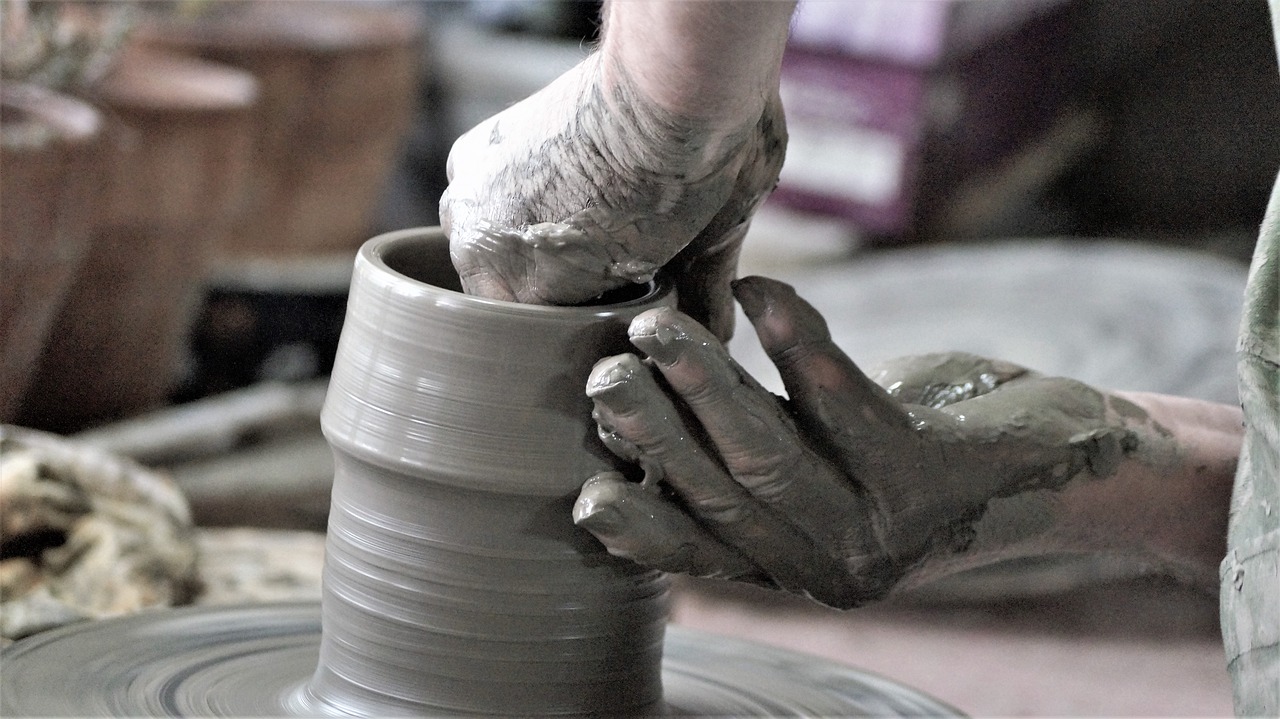
Coiling Technique
The is one of the oldest and most cherished methods in pottery, allowing artisans to create stunning and unique vessels that tell a story. Imagine a potter sitting at their wheel, the soft clay in their hands, shaping it into long, smooth ropes. This technique is not just about making pottery; it's about connecting with the earth and embracing the tactile nature of the medium. Each coil is carefully stacked and blended, resulting in pieces that are as much a reflection of the potter's skill as they are of their cultural heritage.
What makes coiling so special is the ability to create forms that are both functional and artistic. As potters build their pieces layer by layer, they infuse their creations with personal narratives and cultural significance. The process can be meditative, allowing the artist to lose themselves in the rhythm of shaping and molding. It's a dance between the hands and the clay, where each movement is deliberate and meaningful.
Moreover, the coiling technique is a fantastic way to teach the next generation about traditional pottery practices. Many artisans pass down this method through families, ensuring that the knowledge and skills are not lost. This intergenerational transfer of skills fosters a sense of community and belonging, as younger potters learn the stories and techniques of their ancestors. In this way, coiling is more than just a technique; it is a bridge connecting the past with the present.
Here’s a quick look at the coiling process:
| Step | Description |
|---|---|
| 1 | Prepare the clay by wedging it to remove air bubbles. |
| 2 | Roll the clay into long, even coils. |
| 3 | Stack the coils on top of each other, blending them to create a solid form. |
| 4 | Shape the vessel by smoothing the surface and refining the design. |
| 5 | Allow the piece to dry, then bisque fire it before glazing. |
In conclusion, the coiling technique is a beautiful expression of creativity and cultural identity. It embodies the spirit of pottery arts, where each piece is not just a product but a story waiting to be told. Whether you are a seasoned potter or a curious beginner, embracing this technique can deepen your appreciation for the art of pottery and its rich historical roots.
- What is the coiling technique in pottery? The coiling technique involves shaping clay into long ropes, which are stacked and blended to create vessels.
- Is coiling suitable for beginners? Yes! Coiling is a great method for beginners as it allows for creativity and personal expression without the need for advanced tools.
- Can coiled pottery be functional? Absolutely! Many coiled pieces are used for functional purposes, such as bowls and vases, while also being decorative.
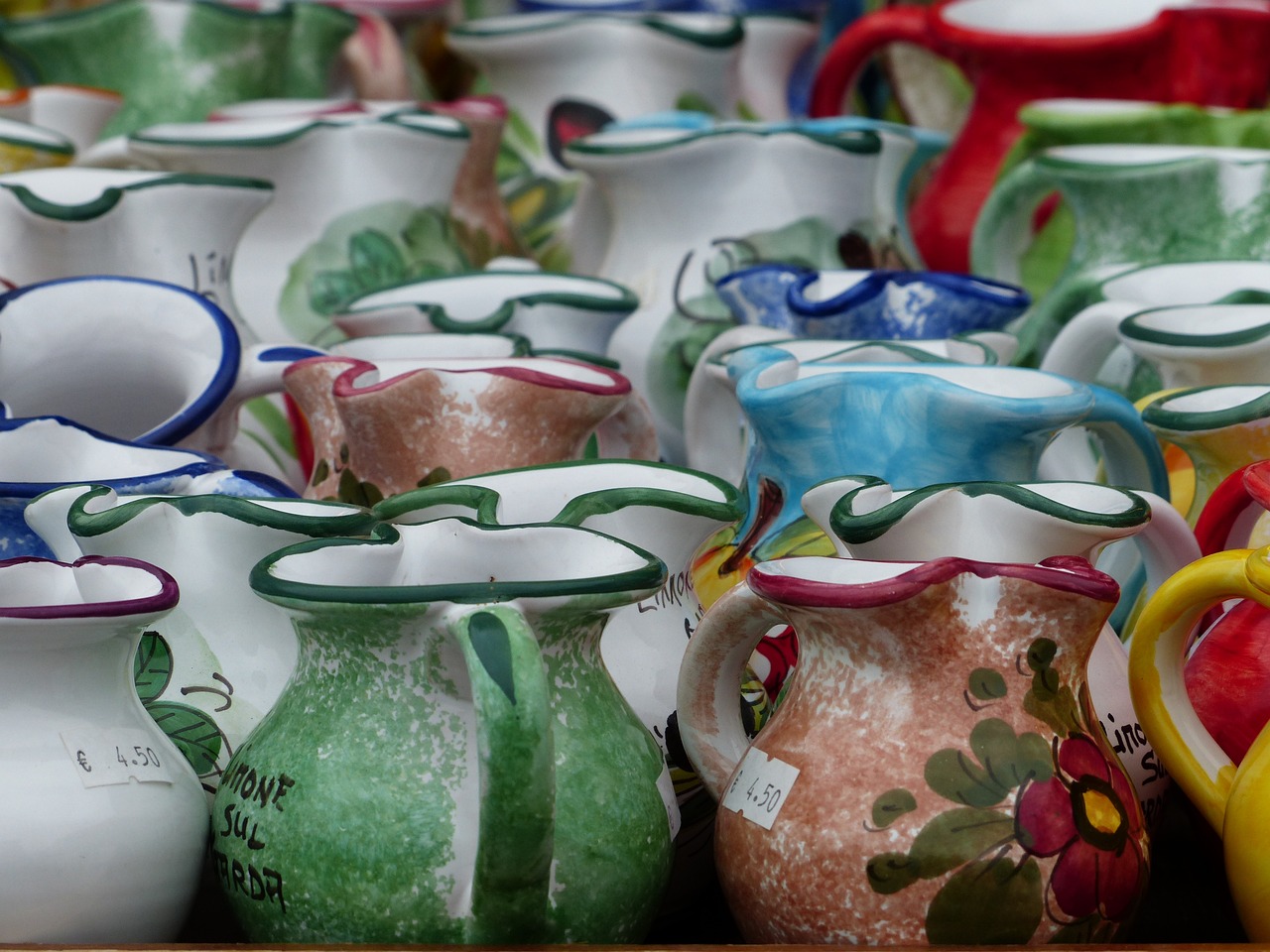
Pinching Technique
The is one of the most ancient and accessible methods of pottery-making, allowing artists to create stunning pieces using just their hands. This technique involves taking a ball of clay, pressing it between the fingers, and gradually shaping it into various forms. Imagine molding a soft dough; it’s a tactile experience that connects the potter intimately with the material. Each pinch, each turn, is a dance between the artist and the clay, resulting in unique creations that often carry a personal touch.
What makes pinching particularly special is its simplicity. Unlike wheel-throwing, which requires a certain level of skill and practice, pinching can be embraced by anyone, from a curious child to a seasoned artisan. This accessibility has led to a resurgence of interest in hand-built pottery, as individuals look for ways to express their creativity without the barriers of complex machinery. It’s a bit like picking up a paintbrush for the first time; the possibilities are endless, and the only limit is your imagination.
When potters use the pinching technique, they often create forms that reflect their individual style and cultural backgrounds. The resulting pieces can range from small bowls and cups to intricate sculptures. The beauty of pinched pottery lies in its organic shapes and textures, which evoke a sense of warmth and intimacy. Each piece tells a story, capturing the essence of the artist's emotions and experiences. For many, this method is not just about crafting functional items; it’s about creating a dialogue between the artist and their heritage.
Moreover, the pinching technique can be enhanced with additional methods, such as adding texture or incorporating decorative elements. Potters may use tools or their own fingers to create patterns, imprints, or even carvings that further embellish their work. This aspect of customization allows for a rich variety of designs, making each piece a unique expression of art. The simplicity of the technique combined with the potential for intricate detailing means that every potter can leave their mark on the clay.
In a world where mass production often overshadows handmade artistry, the pinching technique stands as a testament to the value of personal craftsmanship. It reminds us that art is not just about the final product but also about the journey of creation. As potters pinch and shape their clay, they are not just making objects; they are connecting with their roots, their culture, and their community. This simple act of creation can spark conversations about heritage and identity, making pinching a powerful medium for storytelling.
- What materials do I need to start pinching pottery? You will need clay, a smooth surface to work on, and possibly some basic tools for texturing or decorating your pieces.
- Can beginners learn the pinching technique easily? Absolutely! The pinching technique is one of the most beginner-friendly methods in pottery, making it accessible for all ages.
- What types of items can I create using the pinching technique? You can create a variety of items, including bowls, cups, vases, and even sculptures, depending on your creativity.
- How can I decorate my pinched pottery? You can add texture, paint, or glaze to your pieces after they dry, allowing for endless customization options.
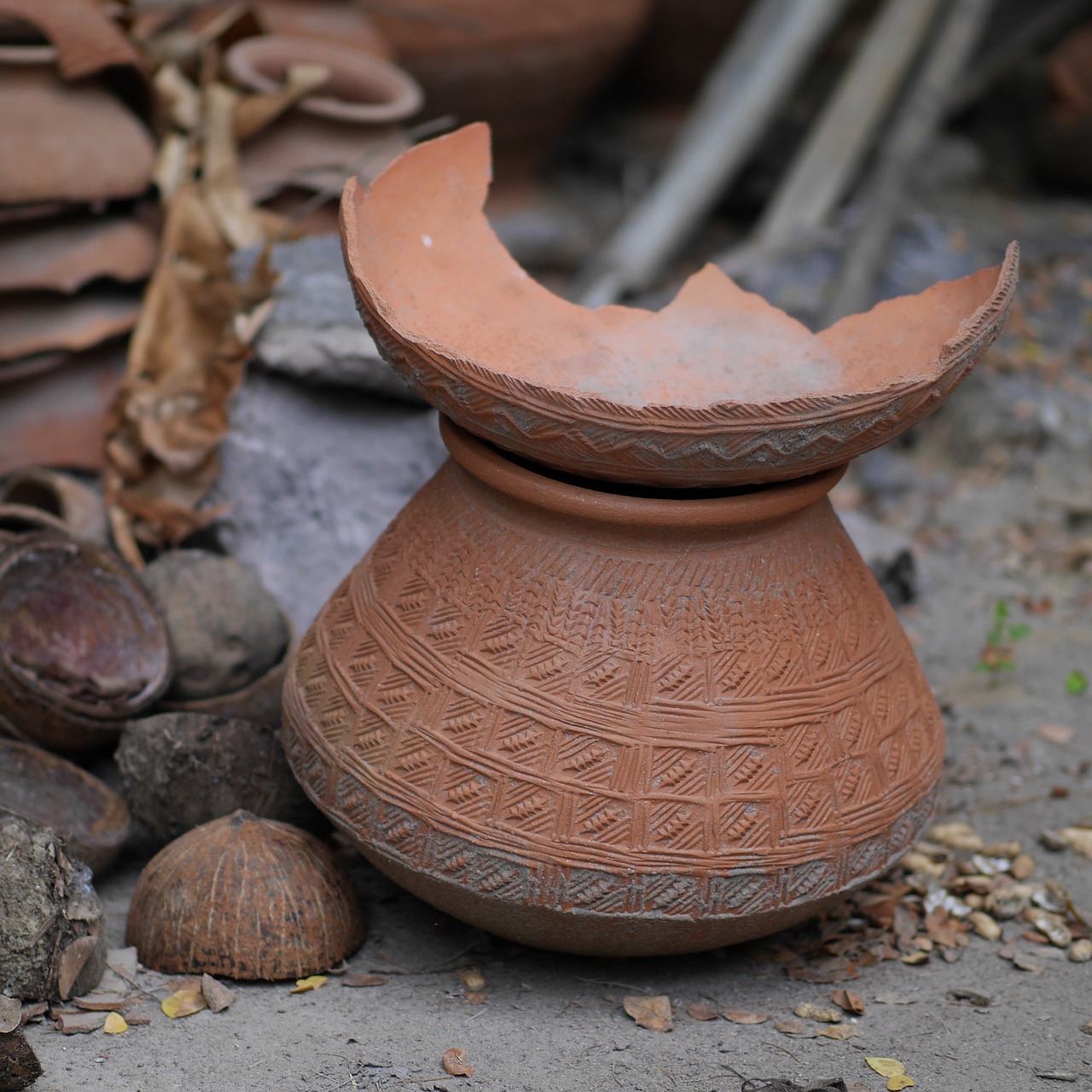
Wheel-Throwing Techniques
This article explores the profound relationship between pottery and cultural heritage, highlighting how pottery arts serve as a medium for connecting individuals to their ancestral roots and traditions.
Pottery has been an integral part of human civilization for thousands of years, serving practical purposes and reflecting cultural identities across different eras and regions.
Various techniques and styles in pottery, from hand-building to wheel-throwing, showcase the diversity of cultural expressions and regional craftsmanship found in this ancient art form.
Hand-building techniques, such as coiling and pinching, allow potters to create unique pieces that reflect personal and cultural narratives, emphasizing the tactile connection between the artist and the material.
The coiling technique involves shaping clay into long ropes, which are then stacked and blended to form vessels. This method highlights the potter's skill and creativity, often passed down through generations.
Pinching is a simple yet effective method where the potter shapes the clay using their fingers, creating organic forms that often evoke a sense of intimacy and personal touch in the artwork.
Wheel-throwing is a captivating technique that transforms a lump of clay into beautifully symmetrical forms. This method requires not only skill but also a deep understanding of the material. As the potter spins the wheel, they must synchronize their movements with the natural flow of the clay, creating pieces that are both functional and artistic. The process is akin to a dance, where each motion is deliberate, and every touch influences the final outcome.
One of the most fascinating aspects of wheel-throwing is the ability to create various forms, from bowls to vases, with precision and elegance. The potter controls the speed of the wheel, applying just the right amount of pressure to shape the clay. This technique not only showcases the potter's technical skill but also their creative vision. The moment the clay begins to rise and take shape is often described as magical, as if the potter is coaxing life into the inanimate material.
Moreover, wheel-throwing techniques can be categorized into several styles, each offering unique characteristics:
- High-Temperature Throwing: This involves working with clay that can withstand high firing temperatures, allowing for more durable and functional pieces.
- Low-Temperature Throwing: Typically used for decorative items, this technique allows for intricate designs and glazing options.
- Altered Wheel-Throwing: Potters can manipulate the form after it has been thrown, adding texture or combining different clays to create stunning visual effects.
Ultimately, wheel-throwing is not just about creating pottery; it’s about the connection between the potter, the wheel, and the clay. Each piece tells a story, reflecting the potter's journey and their cultural heritage. As modern artisans continue to explore and innovate within this traditional technique, they keep the spirit of pottery alive, ensuring that it remains a vital part of our collective history.
Pottery serves as a powerful symbol of cultural identity, allowing artisans to express their heritage, beliefs, and stories through their creations, thus preserving traditions for future generations.
Many pottery designs incorporate symbols and motifs that carry significant cultural meanings, reflecting the values, beliefs, and stories of the communities from which they originate.
Modern potters are increasingly turning to ancestral techniques, reviving traditional practices that foster a deeper connection to their heritage and promote cultural sustainability within their communities.
Pottery often brings communities together, fostering collaboration and shared experiences through workshops, classes, and communal studios that celebrate the art form and its cultural significance.
Participating in pottery workshops and classes can enhance community bonds, providing opportunities for individuals to learn, share skills, and connect with others who share a passion for this art form.
Collaborative pottery projects encourage teamwork and creativity, allowing artists to blend their unique styles and cultural influences, resulting in pieces that embody a rich tapestry of shared heritage.
Q: What is the difference between hand-building and wheel-throwing?
A: Hand-building involves shaping clay by hand without the use of a wheel, while wheel-throwing uses a spinning wheel to create symmetrical forms.
Q: Can anyone learn pottery techniques?
A: Absolutely! Pottery is a skill that can be learned by anyone with interest and practice, regardless of prior experience.
Q: How can pottery connect me to my cultural roots?
A: Pottery often incorporates traditional techniques and designs that reflect cultural heritage, allowing you to explore and express your identity through the art form.
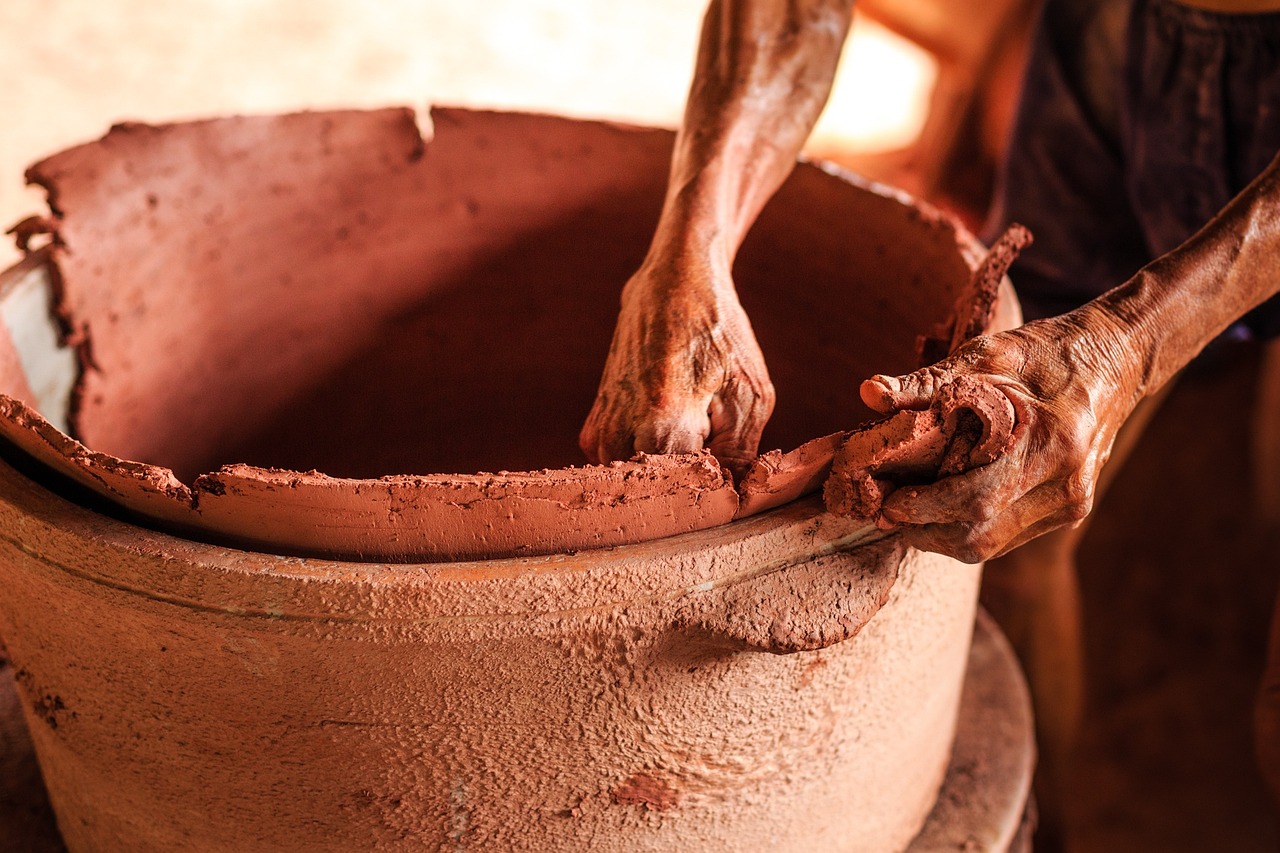
The Role of Pottery in Cultural Identity
Pottery is not just about crafting beautiful objects; it is a powerful symbol of cultural identity that transcends generations. When artisans shape clay, they are not only creating functional items but also weaving a narrative that reflects their heritage, beliefs, and stories. This ancient art form serves as a vessel for expressing the unique traits of a culture, allowing individuals to connect with their roots in a tangible way. The designs and techniques used in pottery often carry deep meanings, echoing the traditions and values of the communities from which they originate.
One of the most fascinating aspects of pottery is its ability to encapsulate a community's history. For instance, many indigenous cultures use specific motifs and symbols that have been passed down through generations. These designs are not merely decorative; they often tell stories of creation, spirituality, or significant historical events. By examining the pottery of a particular culture, one can gain insights into their worldview and social structure, making pottery a crucial link to understanding cultural identity.
Moreover, pottery plays a vital role in preserving traditions. As modern society evolves, many artisans are turning back to ancestral techniques, breathing life into methods that may have been forgotten. This revival is not just about nostalgia; it fosters a deeper connection to heritage and promotes cultural sustainability. By engaging with traditional practices, potters can create works that resonate with their community's past while also appealing to contemporary audiences.
In many cultures, pottery is also a communal activity that brings people together. From family gatherings to community workshops, the act of creating pottery can strengthen bonds and foster a sense of belonging. When individuals collaborate on pottery projects, they share their stories and traditions, creating a rich tapestry of cultural exchange. This collaborative spirit not only enhances the artistic process but also cultivates a deeper appreciation for the diverse backgrounds and experiences within the community.
| Cultural Aspects | Pottery Techniques | Symbolism |
|---|---|---|
| Heritage Preservation | Hand-building, Wheel-throwing | Spiritual motifs, Historical narratives |
| Community Engagement | Coiling, Pinching | Identity representation |
| Artistic Expression | Glazing, Firing | Nature, Ancestry |
In conclusion, pottery serves as a vital link to our cultural identity. It is a medium through which we can explore our roots and celebrate our heritage. As we continue to engage with this age-old craft, we not only honor the past but also pave the way for future generations to connect with their own identities. So, the next time you see a beautifully crafted pot, remember that it is more than just an object; it is a story waiting to be told.
- What is the significance of pottery in cultural identity?
Pottery serves as a medium for expressing cultural heritage, beliefs, and stories, helping individuals connect with their roots. - How do traditional techniques influence modern pottery?
Modern potters often revive ancestral techniques to foster a deeper connection to their heritage and promote cultural sustainability. - Can pottery bring communities together?
Yes, pottery workshops and collaborative projects enhance community bonds by allowing individuals to share skills and experiences.
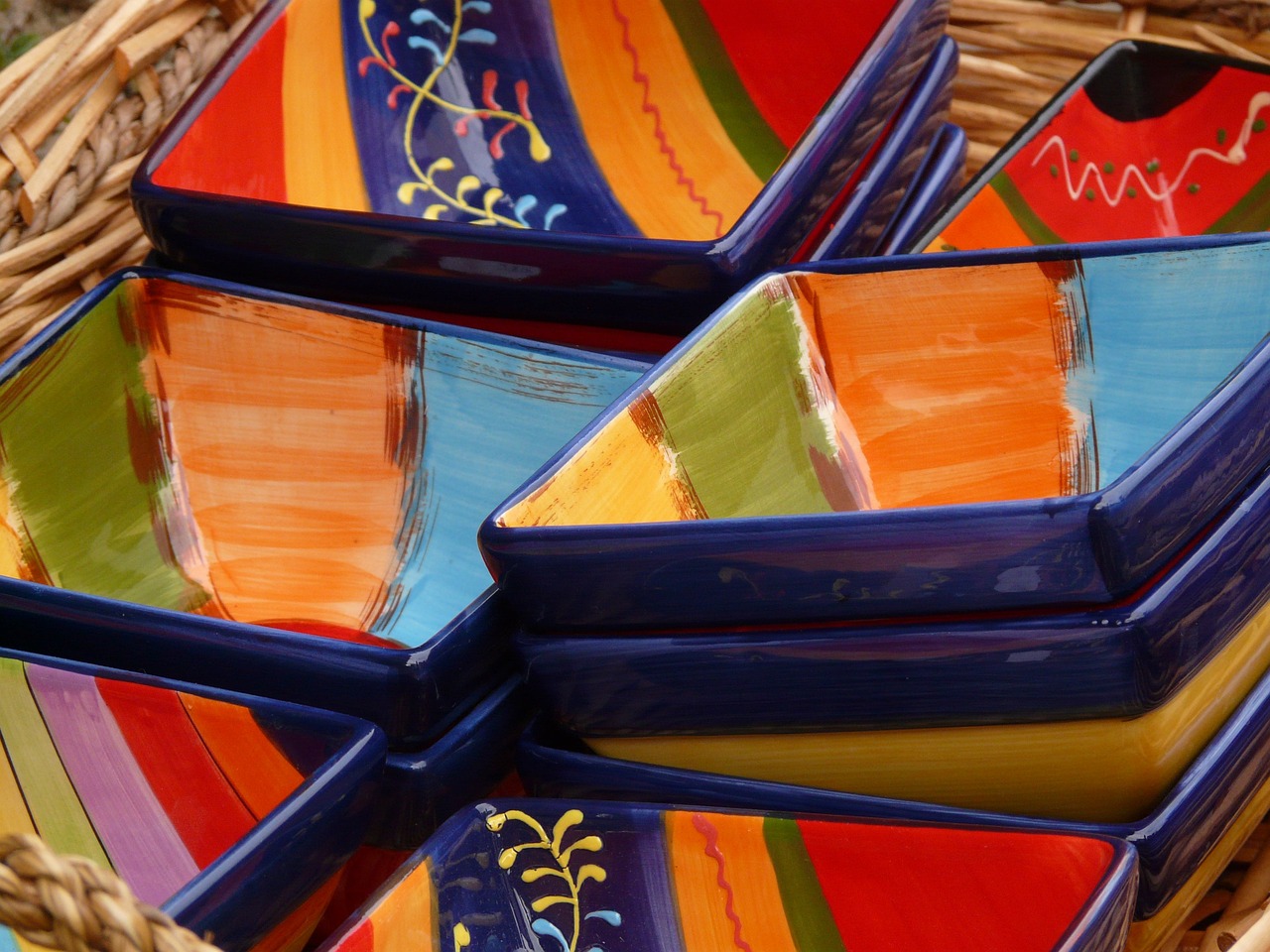
Symbolism in Pottery Designs
When we dive into the world of pottery, we quickly realize that it is not just about creating beautiful objects; it's also about storytelling. Each piece carries with it a history, a message, and a connection to the culture from which it originates. Pottery designs are often rich with symbolism, reflecting the values, beliefs, and traditions of the artisans who create them. For instance, many cultures incorporate specific motifs that have deep meanings, such as:
- Nature Elements: Designs that include leaves, flowers, and animals often symbolize harmony with nature and the importance of the environment in cultural practices.
- Geometric Patterns: These patterns can represent the cosmos, the cycle of life, or even social structures within a community.
- Spiritual Symbols: Many potters include symbols that are sacred to their beliefs, serving as a connection to their spirituality and ancestral heritage.
For example, in Native American pottery, the use of specific symbols can denote different tribal identities, while in African pottery, patterns might express stories of ancestors or significant events. This symbolic language transforms each piece into a canvas of cultural expression, allowing viewers to engage with the artwork on a deeper level.
Furthermore, the colors used in pottery can also carry significant meanings. Bright colors might symbolize joy and celebration, while earth tones can represent stability and connection to the land. Potters often choose their color palettes intentionally, ensuring that every hue contributes to the overall narrative of the piece. The interplay of form, texture, and color creates a visual dialogue that resonates with both the creator and the observer.
In a world where mass production often overshadows individuality, pottery stands out as a medium that celebrates uniqueness and personal expression. Each design, whether intricate or simple, is a testament to the artisan's skill and a reflection of their cultural identity. By embracing the symbolism embedded in pottery, we can gain a richer understanding of the diverse cultures that shape our world.
Through these symbolic designs, pottery not only serves as a functional object but also as a bridge connecting us to our roots, reminding us of the stories and traditions that have been passed down through generations.
Q: What are some common symbols found in pottery designs?
A: Common symbols include nature elements, geometric patterns, and spiritual symbols, each carrying unique meanings related to the culture of the potter.
Q: How do colors influence the meaning of pottery?
A: Colors are often chosen for their cultural significance; for example, bright colors may symbolize joy, while earth tones represent stability and connection to the land.
Q: Can pottery be both functional and artistic?
A: Absolutely! Many pottery pieces serve practical purposes while also being artistic expressions, showcasing the potter's creativity and cultural heritage.
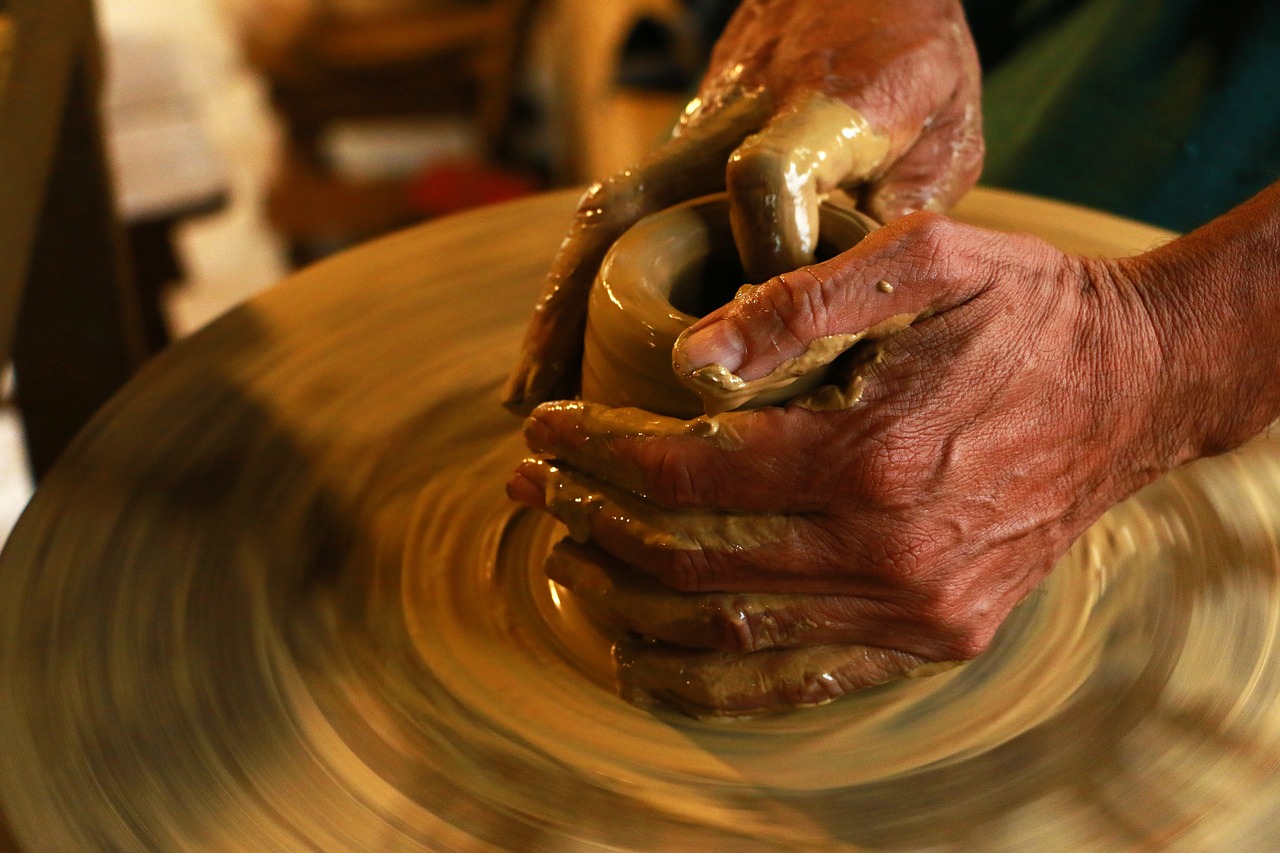
Reviving Ancestral Techniques
In a world that's rapidly changing, the act of in pottery is like opening a time capsule filled with stories, skills, and cultural wisdom. Imagine walking into a pottery studio where the air is thick with the scent of clay and the echoes of generations past. This is where modern potters are reconnecting with their roots, embracing traditional methods that have stood the test of time. By doing so, they not only honor their heritage but also breathe new life into age-old practices that might otherwise fade into oblivion.
For many artisans, the revival of these techniques is not just about creating beautiful pottery; it's a way to forge a deeper connection to their ancestry. Each technique carries with it the fingerprints of those who came before, and by mastering these methods, potters are able to tell their own stories while keeping the narratives of their ancestors alive. It’s like a dance—each movement is a tribute to the past, yet it evolves with every artist's unique interpretation.
Some of the most cherished ancestral techniques being revived today include:
- Traditional Coil Building: This method allows artists to create pieces that are not only functional but also deeply personal, as each coil represents a part of the artist's journey.
- Natural Glazing: Using earth-derived materials for glazing connects potters with the land, fostering a sustainable approach to pottery that respects both nature and tradition.
- Hand-Painted Motifs: The revival of hand-painted designs, often inspired by ancestral symbols, allows for a rich dialogue between the past and present.
Moreover, the resurgence of these techniques promotes cultural sustainability. Modern potters are often seen as guardians of their cultural heritage, using their craft to educate others about the significance of these methods. Workshops and community classes play a crucial role in this revival, as they create spaces for knowledge sharing and skill development. As potters gather to learn from one another, they not only enhance their craft but also strengthen their community bonds, fostering a collective identity rooted in shared history.
In essence, reviving ancestral techniques in pottery is about more than just aesthetics; it’s a celebration of identity. Each piece crafted using these methods serves as a vessel of memory, carrying forward the stories, struggles, and triumphs of those who came before. As more artisans embrace these practices, they weave a rich tapestry of cultural narratives that can inspire future generations to cherish and uphold their own heritage.
- What are ancestral techniques in pottery? Ancestral techniques refer to traditional methods of pottery-making that have been passed down through generations, often reflecting the cultural and historical contexts of specific communities.
- Why is it important to revive these techniques? Reviving ancestral techniques helps preserve cultural heritage, fosters community connections, and promotes sustainable practices in pottery.
- How can I learn these techniques? You can learn ancestral pottery techniques by participating in workshops, taking classes at local studios, or connecting with artisans who specialize in traditional methods.

Community and Collaboration in Pottery
Pottery is more than just a craft; it's a vibrant community experience that brings people together. When you step into a pottery studio, you can feel the energy buzzing in the air. Artists of all backgrounds gather to share their passion for clay, forming connections that transcend age, culture, and skill level. The act of creating pottery often becomes a communal ritual, where stories are exchanged, laughter fills the room, and friendships blossom over the shared love for this ancient art form.
Participating in pottery workshops and classes is a fantastic way to enhance these community bonds. Imagine sitting side by side with someone you've just met, both of you molding clay into unique shapes and forms. As you learn the intricacies of the craft, you also learn about each other. These interactions can lead to meaningful relationships, where individuals not only share techniques but also personal narratives and cultural backgrounds. This exchange enriches the learning experience, making it more than just a skill-building exercise—it's a journey of connection.
Moreover, collaborative pottery projects are a beautiful manifestation of teamwork and creativity. When artists come together to create a single piece, they blend their unique styles and cultural influences, resulting in works that are truly representative of a rich tapestry of shared heritage. Each person adds their touch, their story, and their vision, culminating in a final product that speaks volumes about the power of collaboration. Whether it's a community mural made of ceramic tiles or a series of pots that reflect different cultural motifs, these projects highlight the diversity and unity found within the pottery community.
In addition to workshops and collaborative projects, community events centered around pottery can take many forms. From local art fairs to exhibitions showcasing the work of emerging artists, these gatherings provide a platform for potters to display their creations and connect with the public. They invite conversations about technique, inspiration, and the cultural significance of pottery, allowing artisans to share their heritage while educating others. Such events not only promote the art form but also emphasize the importance of preserving traditional practices and fostering new ones.
As we delve deeper into the world of pottery, it becomes clear that this art form is not just about creating beautiful objects. It's about building relationships—with the clay, with the community, and with our shared histories. Pottery serves as a bridge that connects individuals to their roots and to one another, fostering a sense of belonging and continuity. So, whether you're a seasoned potter or a curious beginner, remember that every piece you create is a part of a larger story—a story that is enriched by the community around you.
- What are the benefits of participating in pottery workshops?
Pottery workshops offer a chance to learn new skills, meet like-minded individuals, and express creativity in a supportive environment. - How can collaborative pottery projects enhance community engagement?
These projects encourage teamwork and allow participants to share their cultural backgrounds, resulting in a deeper connection to the art and each other. - Can pottery be a form of cultural preservation?
Yes, pottery serves as a medium for expressing cultural heritage, preserving traditional techniques, and passing them on to future generations.
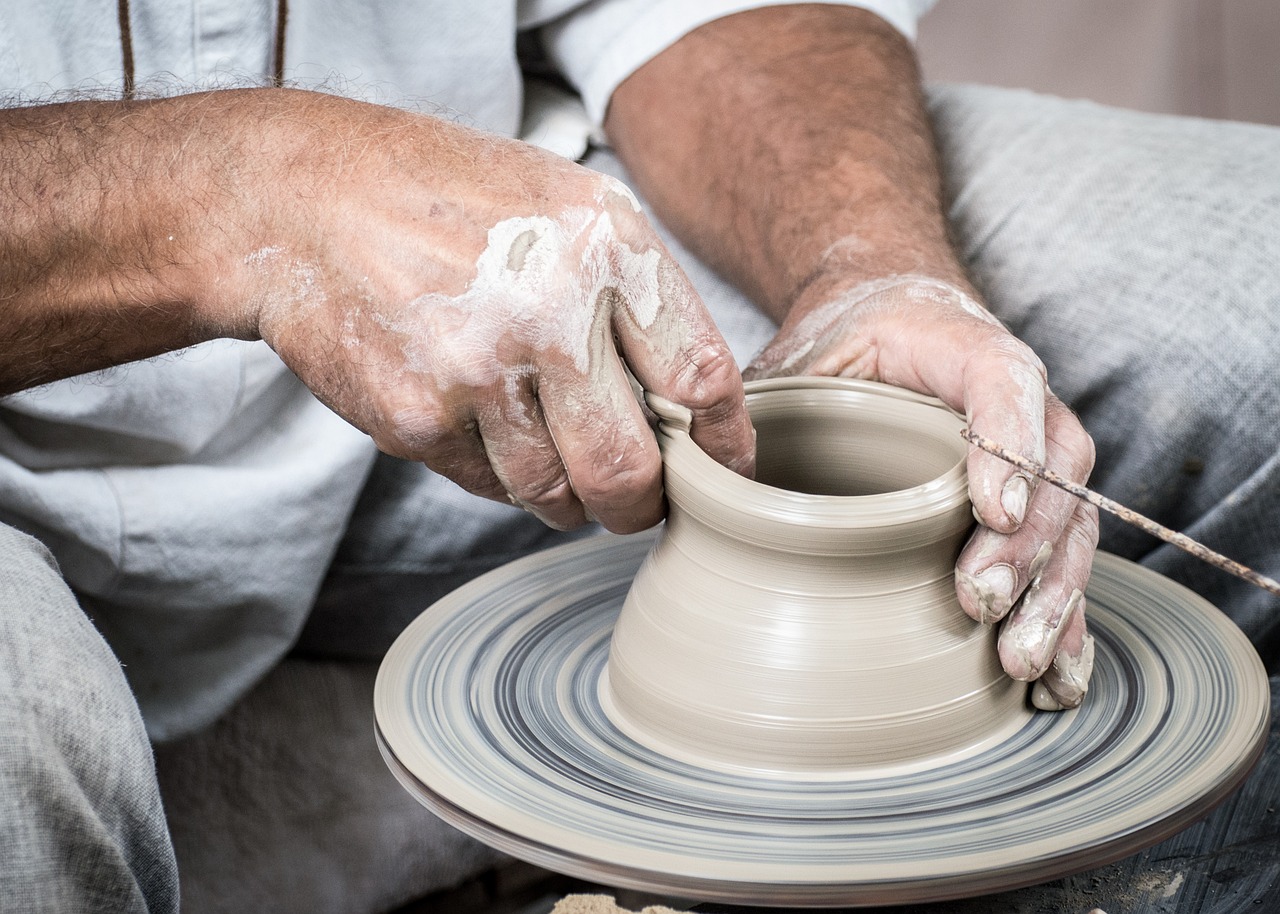
Pottery Workshops and Classes
Pottery workshops and classes serve as vibrant hubs of creativity and community engagement. Imagine stepping into a space filled with the earthy aroma of clay and the sound of laughter echoing off the walls. These workshops are not just about learning techniques; they are about forging connections with others who share a passion for this ancient art form. Whether you're a complete novice or a seasoned potter looking to refine your skills, there's a place for you in these communal settings.
In many pottery workshops, participants are guided by experienced artisans who not only teach the technical skills needed to shape and fire clay but also share the rich stories behind the practices. This blend of instruction and narrative fosters a deeper understanding of the cultural significance of pottery. It's like peeling back the layers of an onion—each layer revealing a new story, a new technique, and a new connection to the past.
Moreover, pottery classes often cater to various skill levels and interests. Some might focus on traditional techniques, while others may explore contemporary styles and innovations. For instance, a beginner's class might introduce participants to the fundamentals of hand-building and glazing, while an advanced workshop could delve into intricate wheel-throwing techniques or the art of surface decoration. This diversity ensures that everyone can find a niche that resonates with them.
Additionally, workshops often emphasize collaboration. Participants are encouraged to share ideas, techniques, and even materials. This collaborative spirit not only enhances the learning experience but also creates a sense of belonging. When you work alongside others, you share not just clay, but also stories, laughter, and sometimes even a bit of frustration—elements that are essential to the creative process.
To give you a clearer picture of what to expect, here’s a brief overview of typical offerings in pottery workshops:
| Workshop Type | Description | Duration |
|---|---|---|
| Beginner Hand-Building | Learn basic techniques like coiling and pinching. | 4 weeks |
| Intermediate Wheel-Throwing | Focus on mastering the potter's wheel and creating functional pieces. | 6 weeks |
| Advanced Glazing Techniques | Explore various glazing methods and surface decoration. | 2 weeks |
Participating in pottery workshops and classes not only hones your skills but also enriches your life. You meet people from diverse backgrounds and share experiences that transcend mere pottery making. It's about creating memories, forming friendships, and connecting to your roots through the art of clay. So, why not take that leap? Sign up for a class, get your hands dirty, and discover the joy of pottery!
- What should I wear to a pottery class? It's best to wear comfortable clothes that you don't mind getting dirty. An apron can also help protect your clothing.
- Do I need to bring my own materials? Most workshops provide all necessary materials, but it's always good to check with the instructor beforehand.
- How long does it take to learn pottery? The learning curve varies for everyone, but with regular practice, you can see significant improvement in just a few weeks!
- Can I take pottery classes if I have no experience? Absolutely! Many workshops are designed for beginners and will guide you through every step.
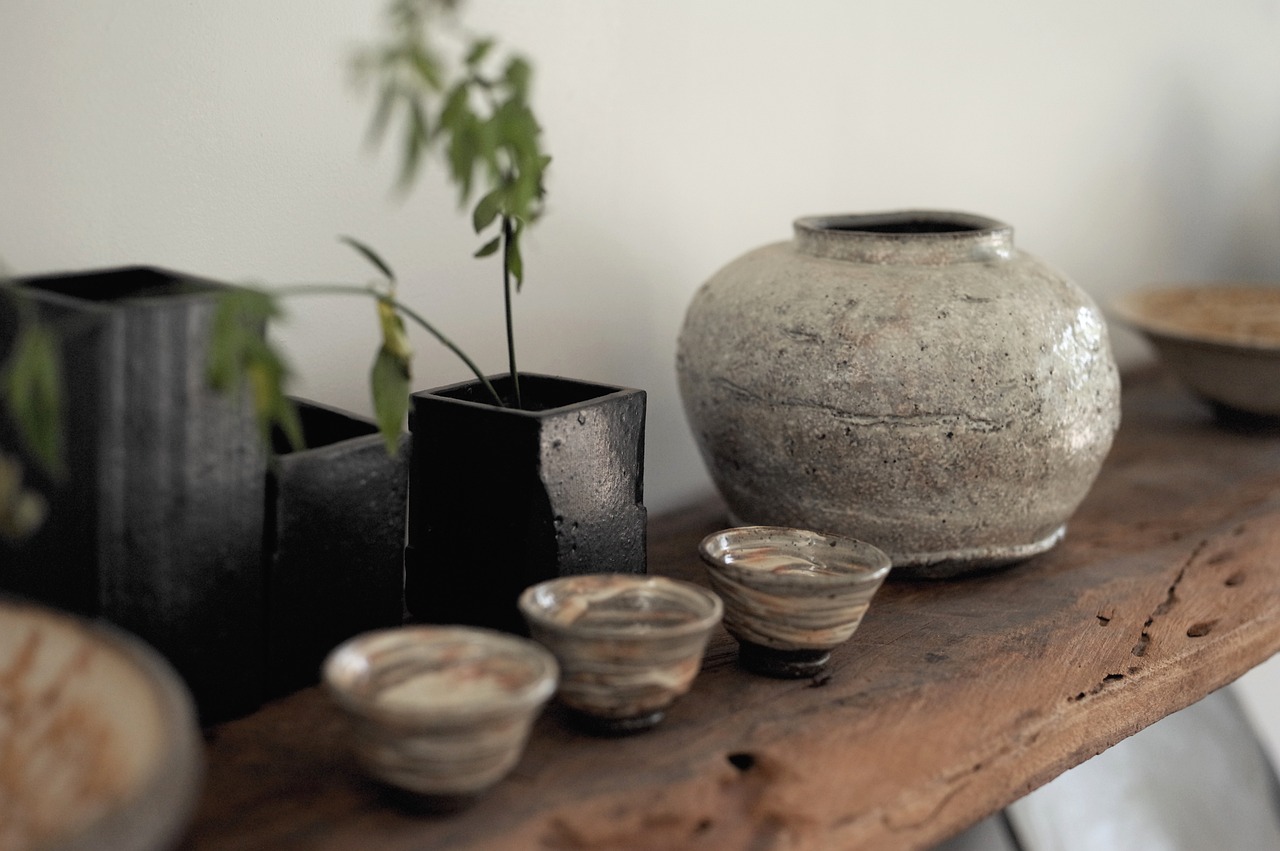
Collaborative Art Projects
When it comes to pottery, the magic often happens when artists come together to create something extraordinary. are not just about merging clay and creativity; they’re about weaving together stories, styles, and cultural backgrounds into a single piece of art. Imagine a group of potters from diverse backgrounds, each bringing their unique touch to a communal project. The result? A stunning masterpiece that embodies a rich tapestry of shared heritage.
These projects can take many forms, from community workshops to large-scale installations. In a workshop setting, participants might work side by side, each contributing their skills and ideas. This not only enhances the final product, but it also fosters a sense of belonging and camaraderie among the artists. Think of it as a potluck dinner, where each dish represents a different flavor of culture and personal expression. Just as every dish adds to the meal, every artist adds to the creative process.
Moreover, collaborative pottery projects often serve as a platform for cultural exchange. For instance, a project might bring together potters who specialize in different techniques—like traditional coiling or modern wheel-throwing. This sharing of techniques not only enriches the artists involved but also educates the community about the diversity of pottery arts. Imagine a potter from one tradition teaching another how to incorporate ancient symbols into their designs. It’s a beautiful cycle of learning and sharing that keeps cultural practices alive and thriving.
In addition to enhancing creativity, these collaborative efforts can also address social issues. Many community pottery projects focus on themes such as sustainability, social justice, or environmental awareness. For example, a project might use recycled materials to create art that highlights the importance of conservation. This not only raises awareness but also encourages participants to think critically about their role in the community and the environment.
To illustrate the impact of collaborative art projects, let’s take a look at a few key benefits:
| Benefit | Description |
|---|---|
| Community Building | Fosters connections among participants, creating a sense of belonging. |
| Cultural Exchange | Encourages sharing of techniques and traditions, enriching the artistic experience. |
| Social Awareness | Addresses important themes through art, promoting dialogue and understanding. |
| Skill Development | Participants learn new techniques and improve their craft through collaboration. |
In summary, collaborative art projects in pottery are more than just a creative outlet; they are a celebration of community, culture, and shared experiences. These projects remind us that art is not just about the final product, but about the journey we take together to create something beautiful. So, whether you’re a seasoned potter or a curious beginner, consider joining a collaborative project. You might just find that the connections you make and the stories you share are the most valuable pieces of art you’ll ever create.
- What are collaborative pottery projects? Collaborative pottery projects involve multiple artists working together to create pottery pieces, often blending different styles and techniques.
- How can I participate in a collaborative pottery project? Look for local pottery studios or community centers that offer workshops or events focused on collaborative art.
- What is the benefit of participating in these projects? Participants can learn new skills, connect with others, and contribute to a shared artistic vision, all while enjoying the creative process.
- Are there any themes commonly explored in collaborative pottery? Yes, themes can include cultural heritage, environmental awareness, and social issues, making the art not only beautiful but also meaningful.
Frequently Asked Questions
- What is the significance of pottery in cultural heritage?
Pottery serves as a vital link to our ancestors, reflecting the traditions, beliefs, and stories of various cultures. It's not just about creating functional items; it's about preserving a way of life and connecting with our roots.
- What are the main techniques used in pottery?
There are several techniques in pottery, with the most notable being hand-building methods like coiling and pinching, as well as wheel-throwing. Each technique showcases unique craftsmanship and allows potters to express their personal and cultural narratives.
- How does pottery express cultural identity?
Pottery is a powerful medium for expressing cultural identity as artisans incorporate symbols and motifs that carry deep meanings. These designs reflect the values and stories of their communities, ensuring that traditions are passed down through generations.
- Can anyone participate in pottery workshops?
Absolutely! Pottery workshops are open to everyone, regardless of skill level. They provide a fantastic opportunity to learn new techniques, meet like-minded individuals, and strengthen community bonds through shared creativity.
- What is the coiling technique in pottery?
The coiling technique involves rolling out long strands of clay, which are then stacked and blended together to create vessels. This method not only highlights the potter's creativity but also allows for a personal touch in each piece.
- Why are modern potters reviving ancestral techniques?
Modern potters are increasingly turning to ancestral techniques to reconnect with their heritage and promote cultural sustainability. By reviving these traditional practices, they not only honor their ancestors but also enrich the contemporary pottery scene.
- What role do collaborative pottery projects play?
Collaborative pottery projects foster teamwork and creativity, allowing artists to blend their unique styles and cultural influences. The resulting pieces often tell a rich story of shared heritage and community spirit.



















